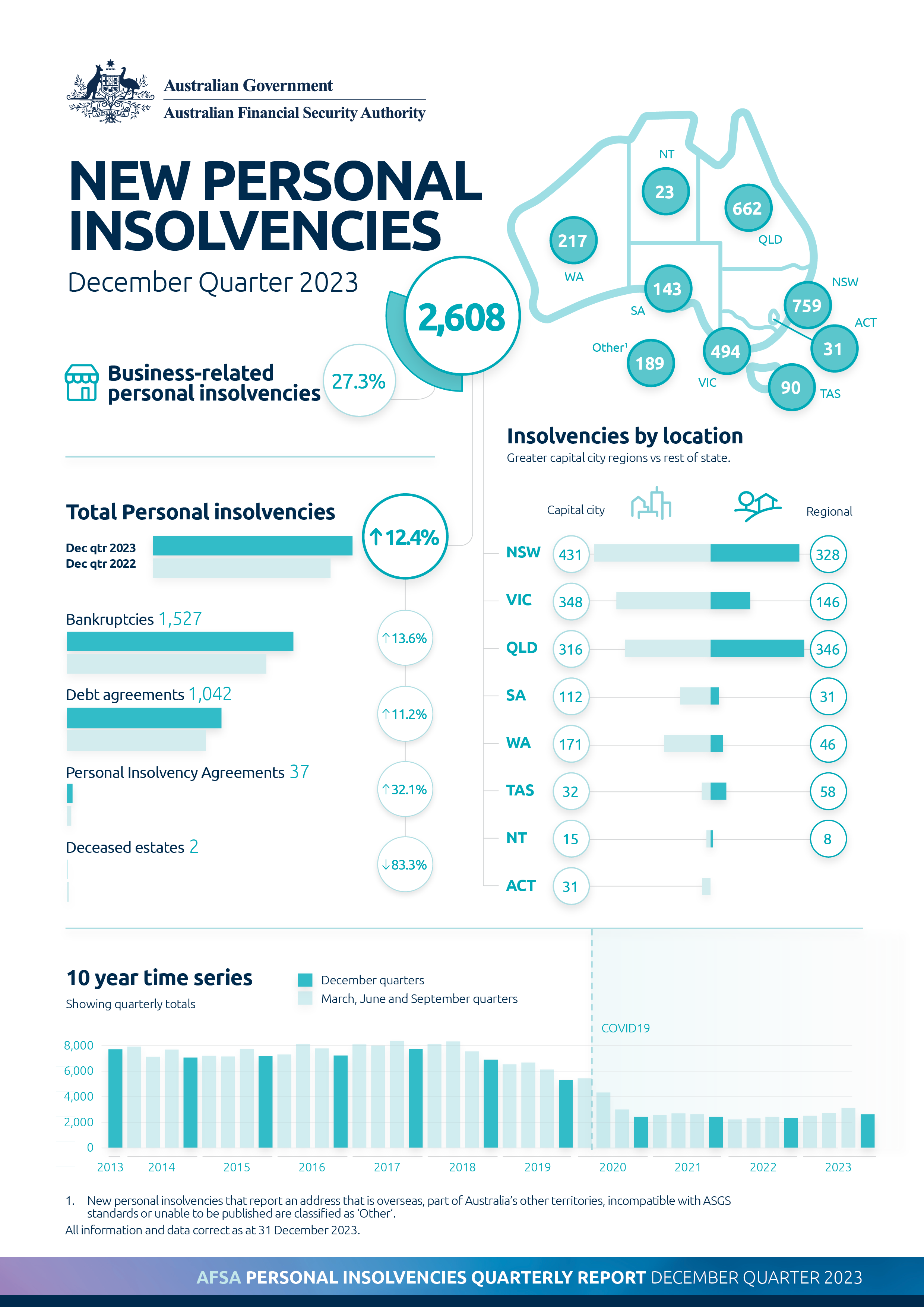On this page
We publish quarterly and annual personal insolvency statistics on bankruptcies, debt agreements and personal insolvency agreements for all states and territories.

For commentary on this quarter, see our media release.
Reports
Further information about personal insolvencies in Australia is available in the workbooks below.
Quarterly personal insolvency statistics
This workbook includes quarterly records of personal insolvencies from September 2007.
Quarterly personal insolvencies
This workbook includes quarterly records of personal insolvencies from September 2007 – in a machine readable file.
Regional quarterly time series
This workbook includes regional quarterly time series of people entering personal insolvency from September 2007.
Further information
Introduction
We publish quarterly statistics on the number of people entering personal insolvencies. Personal insolvency statistics for the full financial year are released with the June quarter statistics each year.
Revisions
Our quarterly statistics are AFSA’s official personal insolvency statistics and are not subject to revision unless an error is identified.
We also publish monthly provisional statistics, which are subject to change due to data development during the quarter. As a result, our provisional and official personal insolvency statistics may not reconcile at the time of publication.
Data collection
Most of the data for our official statistics is collected from the statement of affairs form. Every person who becomes bankrupt or proposes a debt agreement or personal insolvency agreement is required to lodge a completed statement of affairs form with AFSA.
Addresses
When a bankruptcy is the result of a sequestration order, we record the bankrupt person’s address as supplied by the court. We update this address when the individual subsequently lodges a statement of affairs.
Business-related
The business and non-business personal insolvency statistics are generally sourced from the statement of affairs.
When a bankruptcy is the result of a sequestration order, there may be a delay before the bankrupt person lodges a statement of affairs. When this occurs, we record the bankruptcy as non-business related. We update the record with information supplied by the individual when the statement of affairs is lodged. . Bankruptcies resulting from sequestration orders accounted for 9% of bankruptcies in 2022–23.
Scope and coverage
The quarterly personal insolvency statistics solely relate to personal insolvencies and not corporate insolvencies.
The quarterly personal insolvency statistics are published on the Australian Statistical Geography Standard (ASGS). When possible, this information is based on the state of residence reported on the statement of affairs form.
Our quarterly statistics report on the most recently supplied residential address. We validate addresses using the Geocoded National Address File (G-NAF).
Defining a business-related personal insolvency
Personal insolvencies are classified as business-related where the individual entering insolvency has declared on their statement of affairs that they have operated a business in the last 5 years, or 2 years for a debt agreement. Operating a business is defined as where the individual has:
- operated as sole trader, including as a contractor, subcontractor or similar
- been involved in a partnership
- been a director/secretary in a company or
- held a management role in a company.